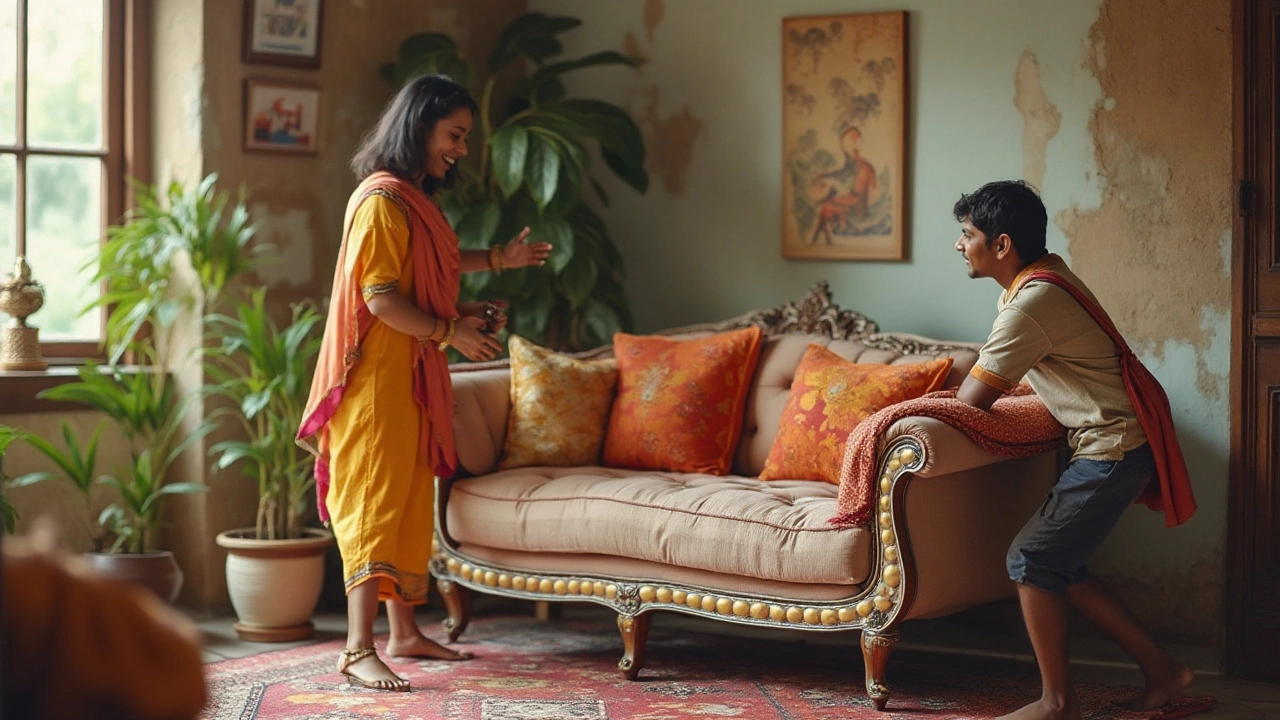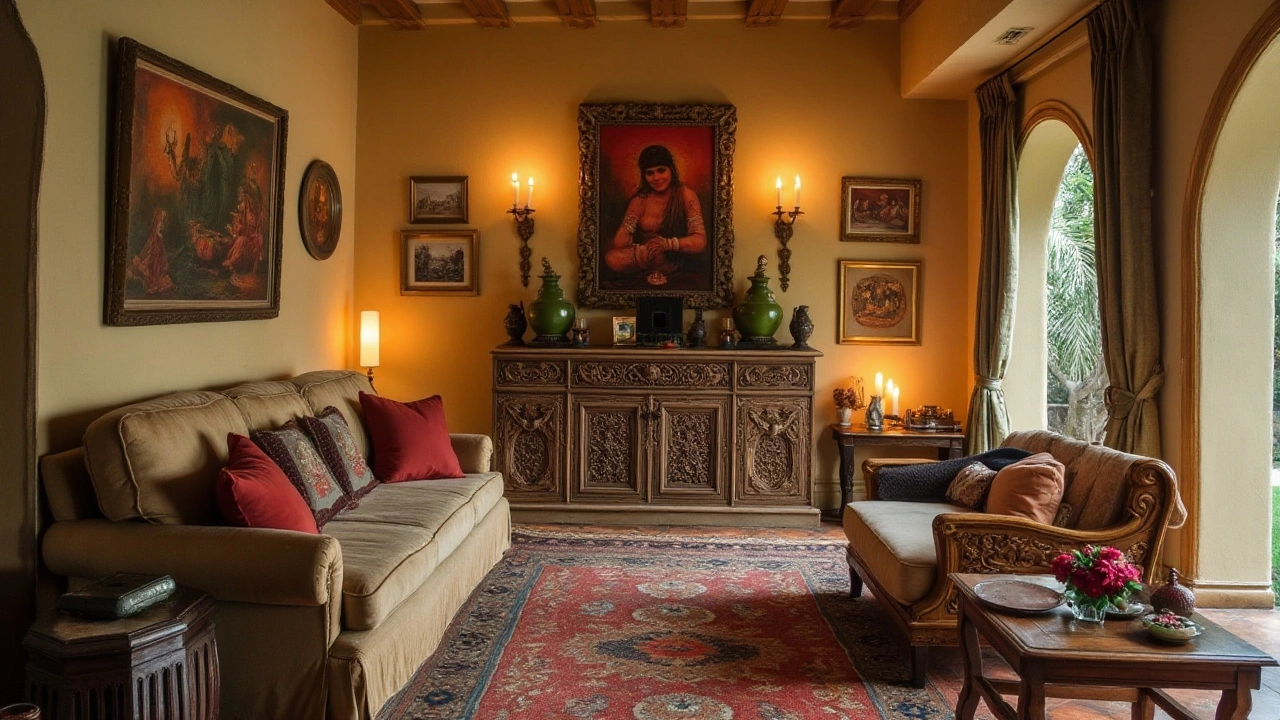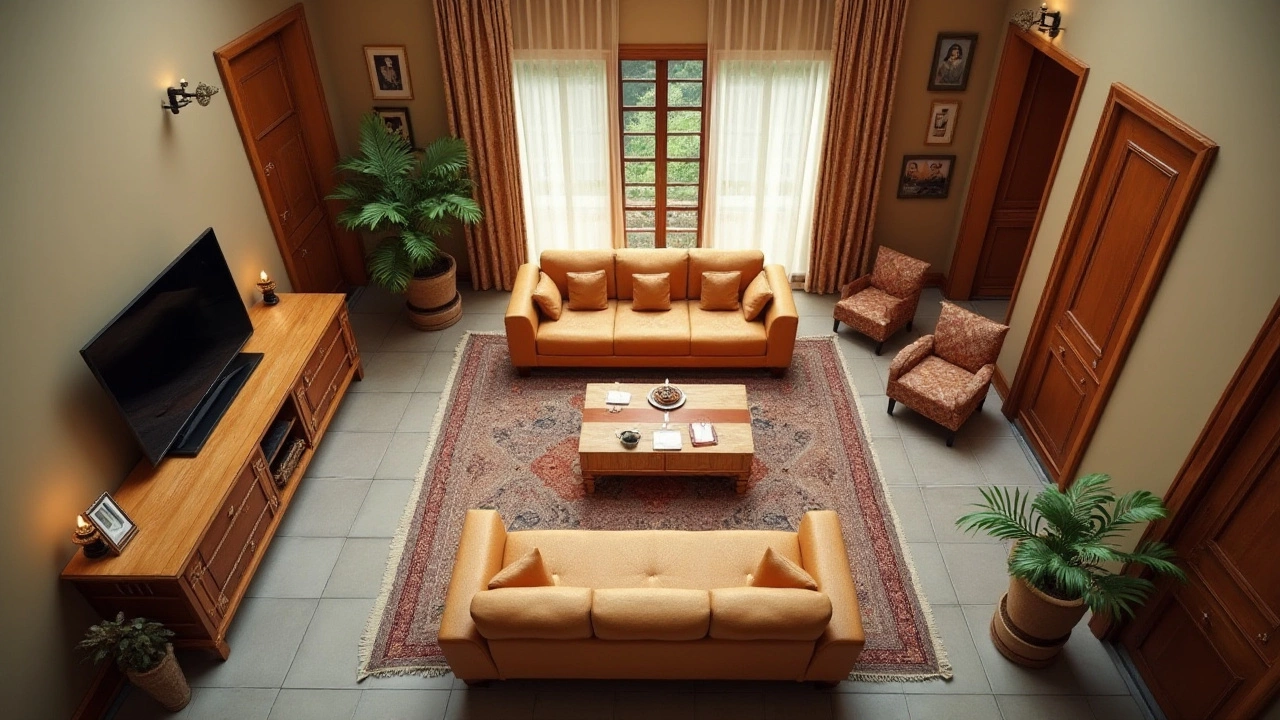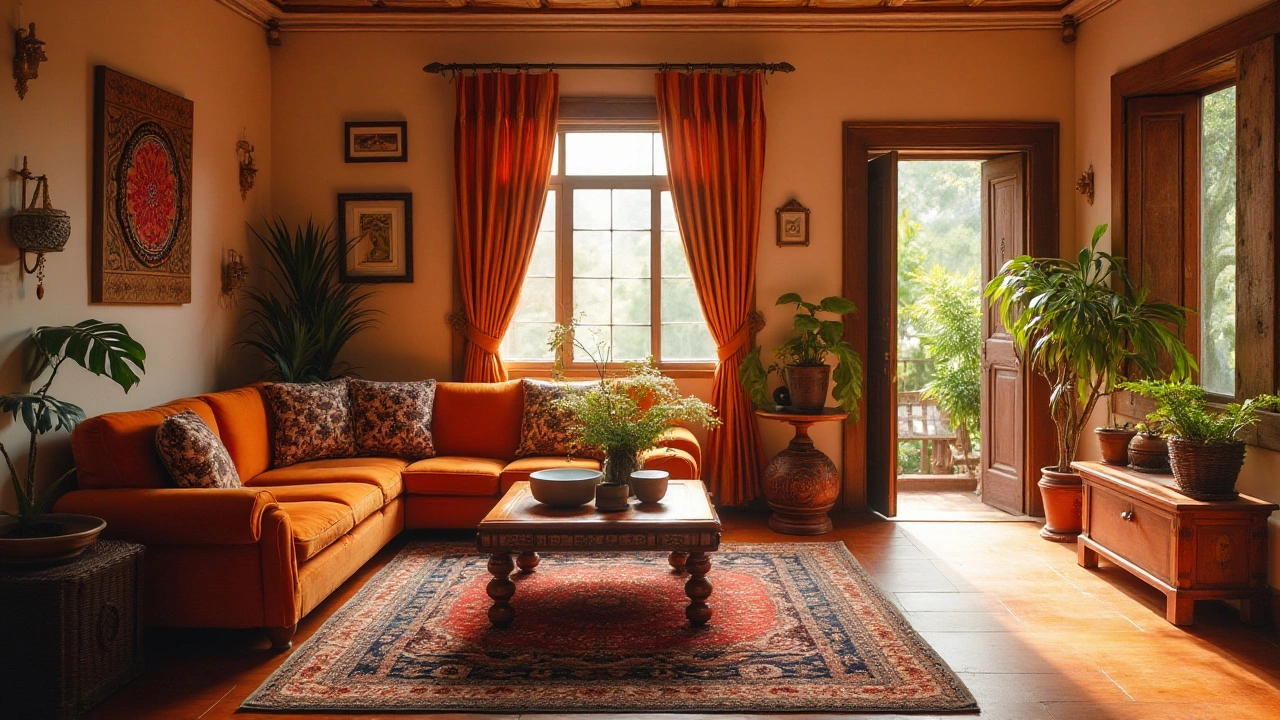Placing a sofa properly can turn a room into a sanctuary or a cluttered mess. We often focus on matching the color and design, but it's equally crucial to think about where not to place it. The wrong spot can disrupt the room's harmony, impede movement, or block natural light.
In this discussion, we'll uncover frequent mistakes and how to avoid them, ensuring your sofa becomes an integral and beneficial part of your home. By understanding the impact of traffic flow, focal points, and functional layout, you'll learn how to create a space that's as practical as it is stylish.
- The Misplaced Sofa: Common Pitfalls
- Navigating Traffic Flow
- Focal Points and Visual Balance
- Strategic Sofa Placement Tips
The Misplaced Sofa: Common Pitfalls
It's astonishing how a single piece of furniture, like a sofa, can dramatically influence the ambiance and functionality of a living room. Misplacing it can lead to an array of issues that disrupt the flow and mood of a space. One of the most frequent errors is placing a sofa directly in front of a window, which can block natural light and make the room feel cramped rather than open and airy. Natural lighting is a key element in any room, providing an uplifting and welcoming vibe that artificial lighting often fails to emulate. Without realizing it, blocking windows can also inadvertently increase electricity usage, as you may find yourself relying on additional lighting during the day.
Another typical blunder involves the placement of sofas against walls, which seems like the most logical spot for maximizing space, but this arrangement can make the room feel cold and uninviting. It creates a rigid environment, potentially discouraging interaction and conversation. Christopher Stuart, a well-regarded interior designer, once noted,
"A room should never allow the eye to settle in one place. It should smile at you and create fantasy."Placing your sofa in such a way encourages a stagnant atmosphere, rather than a dynamic one. Instead, consider pulling it away from the walls to foster a more inviting layout.
Then, there's the issue of traffic flow. Positioning your sofa in high traffic areas can lead to awkward maneuvering and unintentional collisions, disrupting the harmony you hoped to establish. Think of your living room as a mini highway where people often come and go; any obstacles in the walking path can result in frustration. According to a study by the American Society of Interior Designers, efficient layout planning significantly enhances the perceived value and comfort of a living space. If your sofa is the roadblock, then the room's potential is as hidden as a gem cloaked in darkness.
Not to forget the matter of focal points; it’s a design sin to ignore them. Each room naturally has a spot that draws the eye, like a fireplace or a stunning piece of art. When a sofa is positioned without considering these focal points, it can break the visual appeal and unity of the room. A misplaced sofa can compete with these elements, rather than complement them, resulting in a disjointed aesthetic that leaves visitors confused rather than impressed. Strategically placing your sofa to highlight these features can transform your living room from ordinary to extraordinary.
A common oversight, especially in open-concept setups, involves not considering the broader architectural details. A sofa's placement, when casually decided, can undermine architectural features such as moldings or even necessary outlets, turning what could have been a functional area into a cumbersome space. For instance, in homes where intricately carved crown molding defines the character of the room, a sofa should be positioned to frame rather than obscure such details. This balance between interplaying elements creates a sense of curated elegance.
Lastly, consider the surroundings. A sofa that's mismatched or oversized compared to the rest of the furniture can quickly become the elephant in the room—quite literally if there's barely space to move around it. When sofas are too big or small, they disrupt the spatial equilibrium, making the room feel either cluttered or unfinished. Take note of the surrounding decor and choose a sofa that harmonizes in both size and style, which keeps the space visually coherent and welcoming. Poorly placed, even the most exquisite sofa doesn’t stand a chance, turning design dreams into decor dilemmas.

Navigating Traffic Flow
When it comes to arranging your sofa placement, nothing can be quite as crucial as ensuring smooth traffic flow. A well-designed living room takes into account the natural pathways people tend to use as they move through the space. By focusing on this, you not only optimize the function of the room but also enhance its comfort and accessibility. Imagine a bustling party at your place; you wouldn't want guests tripping over furniture or awkwardly squeezing past each other, right? That's where understanding traffic flow becomes a pivotal part of effective interior design.
Interior designers often recommend that walkways between furniture should be at least 24 inches wide, allowing for comfortable passage while maintaining a cohesive look. Making this consideration helps to prevent the room from feeling cramped or constricted. In expansive living areas, this might happen naturally, but in smaller spaces, strategic considerations are essential. For instance, consider the placement of your sofa in relation to doorways and entry points. Blocking a door isn't just a style faux pas—it also limits the natural movement and access, creating potential frustration for inhabitants and guests alike. A sofa backed up against the wall across from the entryway invites people in, guiding their natural movement further into the room.
A significant factor to bear in mind is the concept of 'zones' within a room. Zones are areas designated for a specific function, whether it's reading, watching television, or casual socialization. By segmenting your space into these mini-environments, you can help guide traffic flow simply by the nature of the activities taking place. Utilizing a rug underneath your sofa placement can help define a zone, providing both a visual cue and a tactile guide to navigate the room efficiently. As an old saying goes, "Design is not just what it looks like and feels like; design is how it works.” This mindset and Steve Jobs' words echo the importance of both form and function when considering your furniture layout.
In rooms with multiple usage points, like a living room that doubles as a home office, or a family room that serves as an entertainment space, it pays to be particularly mindful. It's beneficial to create clear pathways that allow seamless access from one part of the room to another, without any obstacles. In multi-functional spaces, movable furniture or modular pieces are advantageous; they can be rearranged to fit different needs at different times of the day. Haven’t we all enjoyed the flexibility a good old ottoman offers, as either a seat or a makeshift table?
Interestingly, a study by the American Institute of Architects emphasized that flexible and open design concepts are increasingly popular, marrying the need for generous traffic flow with multifunctional usage. The study pointed out that today's homeowners favor designs that adapt to their livable spaces, prioritizing both traffic ease and practical furniture layout. A straightforward application of this principle is ensuring that there's enough space behind the primary seating area for people to circulate, rather than cutting directly through the conversational zone. The sense of flow in a home is heavily reliant on these small but significant choices.
Finally, while navigating traffic flow might seem like a minor detail, it’s an essential part of interior design that directly impacts how you and your guests experience your home. This endeavor may seem meticulous, but it’s a valuable piece in making your living area warm and inviting. Next time you consider where to place your beloved sofa, remember that your space should cater not just to how it looks, but how you live in it, each and every day. Pay attention to those pathways—their impacts reach further than you might initially think.

Focal Points and Visual Balance
When it comes to placing a sofa in your living room, understanding focal points and maintaining visual balance is vital. A well-placed sofa should complement the room's natural architecture, highlight its best features, and create a harmonious environment where every element feels thoughtfully considered. The sofa is often the largest piece of furniture in a space, influencing the placement of other elements like televisions, fireplaces, or windows. Capitalizing on the dominant architectural features of a room—the fireplace, a large window with a view, or even a thoughtfully positioned art piece—can tie everything together beautifully.
Consider a room with a grand fireplace. Here, the sofa can anchor the room by facing this focal point, highlighting it as the central gathering space. Such an arrangement naturally invites conversation and coziness around a warm hearth. Conversely, placing the sofa with its back to the fireplace can obscure what could be a defining feature of the room, disrupting the natural flow and making the space feel disconnected.
Balancing Aesthetics with Functionality
Visual balance involves ensuring that the room's elements are spread evenly in terms of weight and appearance. This doesn’t just mean literal weight, like the heft of furniture pieces, but involves factors like color, texture, and even pattern. If one side of the room feels heavier because of a dark, bulky sofa, you might balance this with lighter, airy elements on the opposite side, like an oversized mirror or a grouping of framed prints with bright, colorful artwork.
A pivotal step is also assessing the color dynamics. Assume you have a bold-colored sofa facing a white wall. To balance that striking hue, introduce similar cooler tones throughout the room through accessories like cushions, throws, or a softly colored rug. This way, the sofa acts as a keystone strengthening the cohesive color theme. According to interior designer Kelly Hoppen,
"Balancing colors and textures throughout a space can completely transform how a room feels—visual weight is as impactful as physical weight."
Achieving visual balance extends into accommodating practical needs such as technology. For rooms prioritizing TV watching, aligning the sofa pointers towards the television is logical. Nonetheless, don't let tech rule your aesthetics. Ensure that prospective viewing doesn’t close off the rest of the room. Often, an elegant compromise can be found. Consider configurations that integrate the sofa into multiple focal roles—both for entertainment and conversation.
Proper sofa placement and achieving visual balance might seem overwhelming initially, but it elevates your room’s aesthetic and heightens its functional appeal. Distribute the room’s visual weight through a diverse blend of furnishings and features, ensuring every piece gets its share of the spotlight without overshadowing another. This balanced approach creates a seamless flow, encouraging interaction with every part of the room. By respecting the dynamics of interior design and thoughtful arrangement, your living space becomes a canvas to paint your style and comfort.

Strategic Sofa Placement Tips
When it comes to arranging your living space, placing the sofa can feel like a puzzle. You want to get it just right for comfort, functionality, and style. So, where do you begin? Start by considering the room's initial architecture — walls, windows, and doorways — along with where people naturally walk. Think about how the space feels, how the light enters, and what views the seating spot will offer. A strategic plan involves marrying the practical with the aesthetic.
Measure twice, place once. It might seem somewhat old-school, but physically measuring your room and prospective sofa space can save headaches later. Use painter’s tape to mark the area on the floor where your sofa might sit; step back and see if it blocks fire exits, heaters, or windows. A sofa that’s too close to a radiator, for example, will not just block essential heat during winter but also might end up with fabric damage over time due to constant exposure to heat.
Consider the focal point of your room. In spaces with a fireplace or a picturesque view from a window, it helps to align the sofa in relation to these features. According to the interior design experts at Houzz, "your sofa is always best suited for a direction where its inhabitants can enjoy the best the room has to offer."
"Aligning your main seating towards a focal point creates a natural and inviting gathering space, encouraging conversation," says Leslie Nichols, an esteemed interior designer.If your television is your main feature, ensure there’s a pleasant viewing distance. The general rule of thumb is to place your seating at a distance of about 1.5 to 2.5 times the diagonal size of your screen, creating a balance between comfort and cozy viewership.
Experiment with angles. While it might be counterintuitive, sometimes angling your sofa can break the monotony and add an unexpected element to the room’s layout. This particularly works well in larger rooms to create distinct zones. When placing your sofa at an angle, ensure that you maintain a consistent flow within the room so that the area doesn’t feel disrupted. Experiment with the angles that allow for the most uninterrupted walking paths to ensure that social spaces aren’t too isolated.
Another critical aspect is lighting. Having natural light flow over your sofa can create a warm and inviting look, perfect for daytime relaxation. Yet, too much direct sunlight can damage fabrics. Use blinds or sheer curtains to mitigate this issue. If you're considering lamps or overhead lighting, make sure the lighting complements the sofa setting without causing a glare on screens or overpowering the atmosphere.
Lastly, don’t forget about complementary furniture. The area around the sofa needs attention too. Coffee tables, side tables, and accessories should be arranged so they are reachable without changing seats. An efficient layout that includes harmonious shapes and sizes can augment a sofa’s appeal. To get the most out of your design, make sure the textures and colors speak to each other, creating a cohesive and inviting atmosphere.
In summary, the strategic placement of your sofa should cater to both functionality and aesthetics, forming a space where comfort meets style. By understanding and evaluating the various elements in play, from walls to light sources, you can ensure a sophisticated yet practical setup that resonates with the essence of home.

